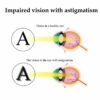
How to Naturally Improve Poor Vision Caused by Astigmatism
We don’t get to choose the features we are born with. Some of us are born with nearly perfect vision, while some of us are born with refractive errors that get in the way of our day-to-day activities. But how can you improve poor vision caused by astigmatism?
Unfortunately, we’re always taught that the only way to deal with poor vision caused by astigmatism is to wear prescription glasses. Corrective eyewear is nothing but a temporary solution. Astigmatism has a variety of negative impacts, so when it comes to your vision, you need something more. You need a permanent solution that will help you eliminate corrective eyewear so that you can see freely, no matter the circumstance.
Improving your eyesight naturally is a process that requires dedication over an extended period of time. If you’re ready to overcome your poor vision from astigmatism, naturally, then we have a few tips to get you started!
Do I Have Astigmatism?
Truth be told, experts suggest that everyone is born with some degree of astigmatism. No eye is identical, including our own two eyes. However, this does not mean that everyone has blurred vision due to astigmatism. Some people may have such a small degree of astigmatism that it fails to affect their vision.
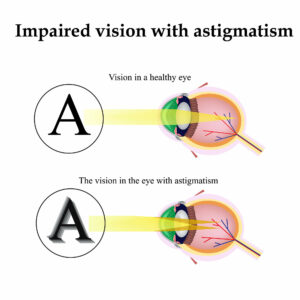 However, many people do suffer from extreme cases of astigmatism. In these cases, the light is not being properly reflected by the lens and onto the retina. Because of this, vision will be blurred.
However, many people do suffer from extreme cases of astigmatism. In these cases, the light is not being properly reflected by the lens and onto the retina. Because of this, vision will be blurred.
Astigmatism is different from its fellow refractive errors, myopia, and hyperopia. Myopia is a refractive condition that causes images in the distance to be blurred. Hyperopia is the opposite. Images close to the eye are blurred, while distant images are clear.
Astigmatism is the two refractive errors combined. Someone with astigmatism will have blurred vision when looking at things in the distance and close-up. So, all-around blurred vision.
Generally, the most recommended treatment for astigmatism is prescription eyeglasses. The trouble is that someone with astigmatism will always need to wear this corrective eyewear. Wearing glasses can become tiring and limiting.
Luckily, there’s another way. Astigmatism can be improved naturally through various exercises and lifestyle habits. If you have astigmatism, start saying goodbye to those glasses. You won’t be needing them for much longer if you follow these tips.
Eat Well and Exercise to Improve Poor Vision Caused by Astigmatism
This first tip for improving your astigmatism is a big one. It’s also not directly related to the eyes. However, a healthy body means healthy eyes.
Eating a poor diet that lacks a variety of nutrients and vitamins can worsen your astigmatism. Your eyes need 17 vitamins and nutrients to be their healthiest. The truth is that most of us don’t get the proper nutrients we need.
The best way to get the required nutrients is to have a balanced diet. This means a healthy balance of carbohydrates, protein, and healthy fats. Unfortunately, many diets consist of mainly unhealthy fats and carbohydrates.
Making a conscious effort to consume more fruits and vegetables is a step in the right direction. This alone will not improve your astigmatism, but it will help with your overall vision health. A balanced diet will also help to protect your eyes from being damaged by high blood pressure, free radicals, and can prevent various vision diseases.
In the same vein as eating well is exercise. Exercising does not only benefit your muscles. Light physical activity can slow aging in the eyes and prevent your astigmatism from getting worse as you age.
Try Vision Training Exercises
Aside from working out your body, eye exercises are also a way to improve your astigmatism. Vision training exercises work to strengthen the muscles in your eyes and improve your vision.
Eye exercises for astigmatism are fairly simple and can be done in only a few minutes. A good place to start is by strengthening your non-dominant eye.
Even if you have astigmatism in both eyes, there is always one eye that is stronger than the other. First, you will need to determine which eye that is if you don’t know already.
Finding Your Dominant Eye
Here’s how you can find your dominant eye:
First, pick a distant object in the room (such as a wall clock). Then create a triangle with your fingers and hold your hands out and center the object in the triangle. Now close one eye at a time.
Did you notice that the object became decentered when you closed either your left or right eye? If you did, great! This means that you have found your dominant eye.
If you closed your left eye and the object was centered, this means that your right eye is your dominant eye. If you closed your right eye and the object was centered, then your left eye is the dominant eye. Often, your dominant eye lines up with which handedness you are.
Now that you have found your dominant eye, you can start strengthening your non-dominant eye. Chances are your non-dominant eye is the one that is more severely affected by astigmatism.
This is a focusing exercise as astigmatism is very much a focusing problem. Cover your dominant eye with your hand and let it relax. Then, pick an object in the distance (it can be the same one from the previous test). Focus on it for 30 seconds with your non-dominant eye. Then do the same thing with your dominant eye. Do this at least four times on each eye.
It is important to do this exercise on both eyes otherwise you risk your non-dominant eye surpassing your dominant eye. Ideally, you want them to be as close in dominance as possible. One will always be stronger than the other, but the closer they are to strength, the more your astigmatism will improve.
Improve Poor Vision Caused by Astigmatism Through Healthy Habits
Astigmatism can be a difficult condition to cope with. However, improving your overall vision through healthy eating, regular exercise, and vision training exercises is a great place to start.
Many people with astigmatism also choose to partake in vision therapy. Vision therapy is a highly personalized eye exercise program. A professional will assess your astigmatism and tailor an eye exercise program to your needs.
No matter what you do, always be sure to check with your eye doctor. They can help monitor any changes in your vision and spot vision conditions before they become too developed to treat.
If you notice any worsening in your astigmatism, talk to your doctor immediately.
Our Rebuild Your Vision Ocu-Plus Formula Contains All 17 Vitamins, Minerals, and Herbal Supplements to Improve Your Eye Health!





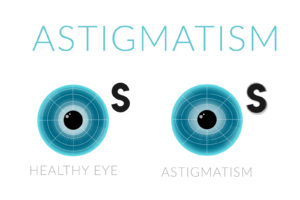
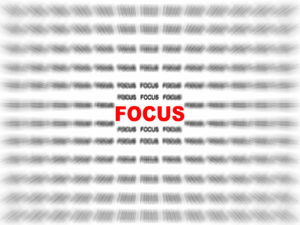

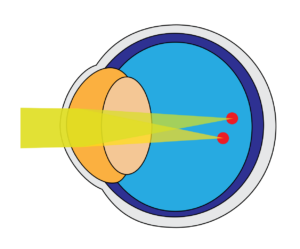
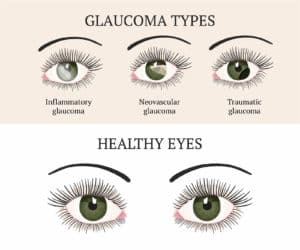

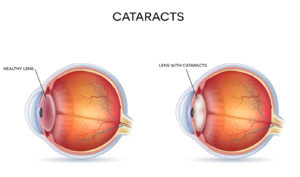
Well, I guess I do not have a dominant eye because it didn’t matter which eye I closed the object always moved over to the opposite side. I do have one eye that has clearer vision, my left eye, the right has a cataract on top of the astigmatism. I also have glaucoma. I guess eye exercises are definitely in order for both eyes. I was told though that my left eye is starting to turn out, this causes a lot of vision issues and I turn my head slightly to the left to be able to focus, trying to look straight ahead is very difficult for me, even painful and I can not focus at all. Such a complicated part of our body, we don’t realize how much we truly rely on them until we can’t
Very useful and helpful thank you